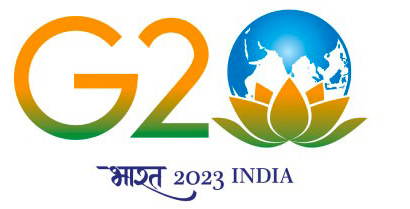Among developing economies, emerging markets (EMs) are relatively more open to foreign flows. Therefore they have been put through a roller-coaster in the decades after the global financial crisis (GFC). Under zero advanced economy (AE) interest rates and quantitative easing (QE), EMs saw huge inflows in search of yield. These became outflows during periods of global risk-off. Foreign inflows help in deepening markets, supplement domestic savings and finance a current account deficit, but excess volatility jeopardises all these functions. While some volatility is good for market price-discovery, too much hurts the real sector.
After the GFC, major source AEs tightened regulation for banks, where the crisis had originated with securitisation failures. But they did not strengthen regulation for non-bank financial intermediaries (NBFIs). As a result cross-border flows migrated to the latter. Such arbitrage was only to be expected.
Under quantitative tightening (QT) and rising interest rates, there are many types of risks to both AEs and EMs from this arbitrage and under-regulation. For example, fixed income funds are now a major source of portfolio flows to EMs. These have fixed liabilities and as rates rise assets may need to be sold at lower prices, with possible defaults.
In the UK in 2022, the central bank had to rescue insurance companies whose unregulated use of derivatives to hedge interest rate risks forced them into distress sales of G-Secs as yields shot-up after the Truss unfunded budget. US small banks are under stress. The US Commodity Futures Modernization Act passed in 2000, lightened position limits, among other deregulations, for swap dealers. Oil price volatility was much higher in the subsequent period. This hurt both oil exporting and importing countries.
It is a puzzle why these obvious arbitrage gaps were allowed to continue. It may be that finance accounts for a major share of AE output and is a strong lobby. It is supported by the free-market ideological that believes regulation cannot succeed and only adds to costs. Since markets are able to outsmart regulation, it is better not to try.
Repeated shocks in this century, however, have shown the flaws of under-regulated free markets. Financial liberalisation has many benefits but requires appropriate guardrails. Market discipline alone is inadequate.
Well-designed regulations can mitigate common failures in finance. Countercyclical macro-prudential regulation can reduce incentives for excess risk-taking; if it is broad-based it can close arbitrage gaps; if it is market and rule-based it can achieve all this with minimal regulatory distortions, discretion and delay. Since there are always temptations in the financial sector, however, supervision is also essential as well as more transparency and standard disclosures. A combination of self- and rule-based regulation can work.
For example, margin requirements or a financial transaction tax can reduce volatility. Exposure limits or higher cap adequacy for small banks could have avoided the series of failures in the US. Systemic spillovers were thought to be limited to large institutions but Silicon Valley Bank demonstrated the speed of rumours and withdrawal in the digital world.
Thus simple broad macro-prudential regulation is arbitrage resistant, strengthens incentives to reduce risks. Global norms can be created through comply or explain frameworks — like the Basel bank standards. Such market-based regulation would be good for AEs also since it would reduce their financial vulnerabilities. It is feared that stronger regulation would increase borrowing costs, but reduction in volatility would actually reduce costs.
In AEs, even for banks the emphasis on self-regulation and own assessment of risks continued. Only large banks were thought to create systemic risks. The Trump government lightened regulations for small banks in 2018. The US Fed investigation after the current wave of small bank failures found pressure on staff to reduce regulatory burdens on firms, to demonstrate due process and accumulate more evidence before action.
Most American macroeconomists wanted tighter macro-prudential regulations to accompany and mitigate risks from QE. For example, Yellen after the GFC had called for minimum margin requirements on a market wide basis to reduce volatility and large exposures. In a 2019 talk with Krugman, she regretted that they still did not have tools to prevent risky lending. US applies some measure moderating credit demand, but none moderating credit supply.
EMs used macro-prudential tools four times more intensively compared to AEs before the GFC. As more AEs began using such tools after the GFC the ratio fell to 3.3. But in AEs prudential regulation stays largely limited to restraints on borrowers so that NBFIs’ risk-taking is not restrained. In AEs loan to value ratios to restrain consumer credit are the dominant measure used, in EMs it is FX position limits. Prudential measures seem to have helped protect EM financial sectors so far.
A minimal set of macro-prudential measures imposed as universal criteria across countries and institutions could curb arbitrage flows. These were discussed in earlier G20s but taxation was seen as an individual right. Recently, however, G20 has reached agreement on a minimum corporate tax under the initiative to curb base erosion and profit shifting.
G20 can be most productive in the provision of collective goods where coordination across countries is required. One country tightening alone can see capital flight. It can strengthen regulators against domestic lobbies and political pressures that create costly domestic crises as well as global spillovers.
What can central banks do?
Central banks can reduce spillovers by avoiding over-reactions and extreme positions. For example, inflation targeting must be implemented flexibly so the economy does not deviate far from the equilibrium real policy rate in terms of expected inflation.
EM central banks need to build slack to smooth global shocks and respond to domestic cycle, use multiple instruments, build adequate FX reserves. Such polices have helped India do relatively well.
Since the dollar is the reserve currency the Fed has a special responsibility to avoid over-reactions that create domestic risks and global spillovers. Even if it believes its mandate is only the domestic economy, now feedback from EMs to the US itself is large. The Fed should be cautious and data-based not because it is good for EMs but because it is better for the US. Making a distinction between market making and monetary policy can help provide support required to calm markets, even under tight monetary policy.
This commentary originally appeared in The Hindu Business Line.




